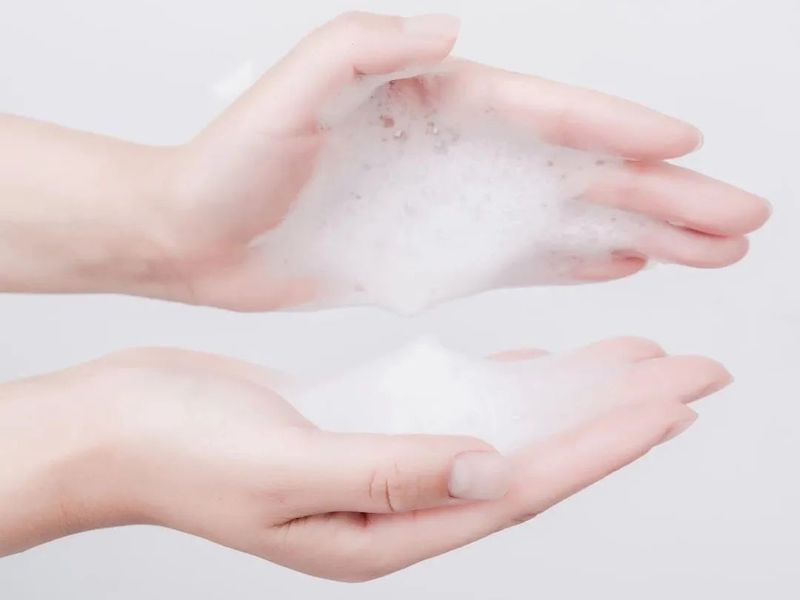
Product description of shower gel
2024-06-15 20:00Product description of shower gel
Shower gel is a commonly used personal skin cleansing product. It is composed of three major parts: surfactants, skin care agents and sensory additives.
It mainly cleanses and removes dirt from the skin and sterilizes and sterilizes. The main ingredients are anionic surfactants with good cleansing effect, high safety, mild properties and moderate price, such as: AES-Na, K12NH4, AESNH4, MAPK, soap, non-ionic surfactant 6501, APG, amphoteric surfactant BS-12, CAB, imidazoline, etc. [1].

Principles for selecting shower gel components
1► Basic idea:
The main function of shower gel is to clean excess oil, dirt, sweat stains and human secretions attached to human skin and keep the body clean and hygienic. This function is mainly achieved by surfactants. Therefore, multiple surfactants must be used in all shower gel formulas to constitute the main ingredients of shower gel.
Secondly, surfactants remove oil from the skin surface while removing dirt from the skin, which can easily cause the skin surface to become dry and rough. In order to offset these side effects and effectively protect the skin from damage, conditioning ingredients and moisturizing and water-retaining ingredients must be added to the formula.
In order for the product to remain stable for a long time without deterioration or failure, sensory additives such as thickeners, mildew inhibitors, pearlescent agents, fragrances and pigments must also be added [2].
2► Surfactant selection principles:
Surfactants are the main ingredients of shower gels. They use their own adsorption, surface tension reduction, penetration, emulsification, solubilization, and dispersion to give the product excellent degreasing power, detergency and rich foam.
The principle of selecting surfactants for shower gels is to strike a balance between detergency and skin protection. It must be able to effectively remove dirt from the body, but it should not remove too much oil from the skin, and it is not allowed to irritate the skin or damage skin tissue. The two requirements are contradictory and must be paid special attention to.
Science and technology are changing with each passing day. Today, there are dozens of surfactants that can be used in shower gels. In theory, there is a lot of room for raw material selection during the formula design process.
However, considering factors such as degreasing power, detergency, foaming power, irritation, stability and price, most shower gel formulas are still mainly anionic surfactants, with some zwitterionic surfactants as auxiliary.
3► Moisturizer selection principle:
Moisturizer is the most basic performance of personal care products. In the design of bath product formulas, in order to avoid excessive degreasing of surfactants causing dry skin, as a bath product for cleaning skin, moisturizers that protect the skin are essential additives.
You can choose alcohol substances with relatively large molecular weight, soluble in water, and high boiling point, such as glycerin, ethylene glycol, sorbitol, polyglycol, etc. They are adsorbed on the skin surface during bathing and are not easily washed away with water. After the surface moisture evaporates, a protective film is left on the skin, which prevents or slows down the loss of internal moisture and keeps the skin moist.
4► Moisturizer selection principle:
In the formula, the emollient mainly plays a role in reducing the irritation of shower gel, adjusting the skin feeling during and after bathing, and improving the appearance and performance of the product.
Grease-attached shower gels can also be emulsified to add oil-based emollients, such as branched esters, polyoxyethylene natural oils, lanolin and silicone oils, etc. After bathing, a layer of oil film is left directly on the skin to replenish the oil components lost due to bathing, and the moisturizing effect is better. Combining bathing with moisturizing is suitable for people who bathe frequently, have little dirt and delicate skin.
5► Consideration of physical and chemical properties standards
The pH value of human skin is weakly acidic, and the pH value range is generally 5.5 to 6.5. Therefore, the pH value of shower gel is best consistent with this, and the degreasing power will be lower. Moreover, at this pH value, amphoteric surfactants such as betaine show cationic properties and can exert bactericidal and softening effects. Citric acid is usually used to adjust the pH value.
People's usage habits require shower gels to have a specific viscosity. Betaine-type amphoteric surfactants and non-ionic surfactants such as alkanolamides and amine oxides are thickeners themselves, and adjusting their dosage can change the viscosity of the product.
In addition, some water-soluble polymers, such as polyethylene glycol (6000), Carbopol resin, cellulose derivatives, etc., as well as inorganic salts such as sodium chloride, ammonium chloride, and sodium sulfate can be used to increase the viscosity of the product. Appropriate viscosity can increase the stability of the product and prevent it from stratification [2].
